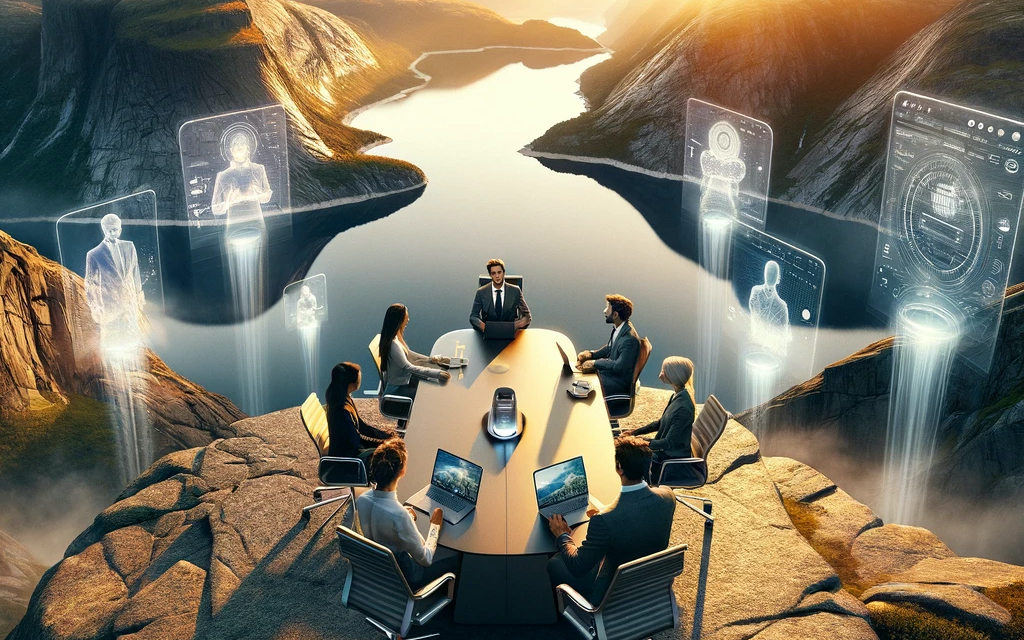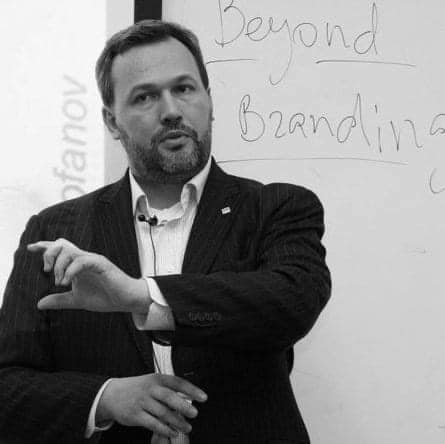In the emerging post-industrial work landscape, how can leaders persuade people to stay and pursue the organization’s goals?
Before the pandemic arrived, the relationship between firms and people had become much more loosely coupled. Half of millennials in the United States, for example, were doing full-time or part-time freelancing. Knowledge workers could work from anywhere, though some industries were better prepared for this than others. Enterprises that required an in-person presence and physical assets to operate faced enormous challenges.
The pandemic further accelerated the decentralization of work. Many were forced to work from home full-time, which was stressful for those balancing work and family. However, this new situation also provided increased flexibility for knowledge workers. Their jobs were now portable, and people could relocate without changing employers.
The additional time spent with family and the incessant worrying about health caused many to reevaluate their careers. There were significant regional differences in the cost of living and quality of life. Aspects of the latter included Covid restrictions, proximity to friends and family, local culture, crime rates, local politics, and tax burdens. In a survey conducted by Bankrate.com last year, 31% of 18 to 31-year-olds had moved during the pandemic. Most cited proximity to family as the main reason. Cost of living was another important consideration for many.
Working from home meant that the threshold for switching jobs was low. People did not have to relocate, and their onboarding could be done entirely online. They might not even have to (or be able to) meet any of their new colleagues in person.
Even as Covid restrictions are now being reduced or dropped in many jurisdictions, many are unwilling to return to their pre-pandemic work lives unchanged. Some do not wish to go back to the office at all, and most want the flexibility to do either. Hybrid work will become mainstream in the years ahead.
According to a survey conducted by the financial advisory firm The Motley Fool, 20% of U.S. workers overall have changed career paths in the last two years, for millennials it was 54%. You did not read wrong — more than HALF millennial changed career paths. Two-thirds attribute the change to the pandemic, and 61% received an industry-recognized credential in the process. 68% learned a new skill without the support of their employer. An astonishing 58% took a pay cut. More than a third of millennials plan to look for a new job post-pandemic. That is the largest percentage in a generation.
What can leaders do to meet these challenges and persuade people to stay and pursue the organization’s goals? We think the following areas warrant examination:
- collaborative goal-setting
- compensation
- organizational structure
- work flexibility
- collaboration platforms
- community
- individuality
- well-being
Dr. Edwin Locke’s classic definition of leadership is “the process of inducing others to pursue a common goal or vision.” Goals may be set from above, chosen by people themselves, or developed collaboratively. Collaborative goal-setting yields goals that are ambitious yet realistic. It also provides a way to consider individual employees’ values and goals.
The term “mission” refers to an important endeavor or assignment. In contrast with the broader “project,” the term implies being substantially dedicated to that single endeavor. One cannot be on many missions at once.
The “meaning” of work refers to the impact beyond the immediate value created. For organizations, the work should connect to the broader strategy and purpose. For employees, it might be that they are learning something valuable that will help their careers or directly address a problem or opportunity vital to them. When thinking about customer value, we might try to see the long-term benefit.
We do not mean to suggest that enterprises must “serve society” in an altruistic sense. They already seek to provide value for value – for customers, employees, and shareholders. However, if leaders want to more effectively attract and retain talent, considering how people think about and value the work they do is vitally important.
We propose the term meaningful missions to denote projects that seek to address significant problems and opportunities that will create economic value, fit into the organization’s purpose, and that its participants will be genuinely excited about. Whether the mission is focused on business improvement or developing new ventures, compensation should reflect the degree of mission success.
Employees often feel far removed from the top-level goals of the organization. It is not merely the organizational structure that needs flattening; it is the goal hierarchy. We can redesign hierarchical organizations as platforms that assemble and manage teams for meaningful missions. The duration of these missions should match the shorter employee tenures that we see for knowledge workers. Fulfilling a mission adds to one’s portfolio of accomplishments.
A word of caution: If an organization recruits people who are fearful of failure, not terribly ambitious, and not genuinely passionate about the organization’s vision and mission, the result will be a large portfolio of mediocre missions failing slowly. Work methodologies do not free leaders from the responsibility of making good decisions about people.
Due to the geographical dispersal of today’s talent base, organizations must incorporate work flexibility into every mission. Different missions may require different degrees of work flexibility depending on the participants.
As metaverse technology evolves over the next few years, the collaborative work experience will go far beyond today’s video meetings and SaaS applications. Today’s co-working spaces will likely become just-in-time “work studios” leveraging metaverse technology, where people can get out of the house but still avoid burdensome commutes. The office itself will become physically decoupled and decentralized.
Missions do not exist in a vacuum. There is tremendous power in learning and connecting across the organization. By building and nurturing a community (online and offline), we can give people a sense of belonging. The community does not exclusively have to consist of people inside the organization. It may focus on the overall purpose and vision, with outside participants contributing their own experiences and ideas.
We do not advocate turning the workplace into a platform to pursue non-work-related interests. However, leaders should view their people as volunteers who need to be won over on an ongoing basis. The ability to select, propose, and co-design missions will contribute to a feeling of individual autonomy and expression. Thus organizations can provide both a sense of belonging and encourage individualism.
Employee well-being is about making sure that people can be their best selves. Mental health is especially deserving of our attention. It is more important now than ever, after two years of Covid and now with the beginning of war in Europe.
Well-being is essential for leaders as well. If you are a senior executive who feels bored, exhausted, stuck with uninspiring work, and bogged down by complexity, start with yourself. Learn to improve your own circumstances before changing the organization around you.
Finally, if leaders find it difficult to formulate meaningful missions, a possible problem area can be that the organization’s vision and purpose need to be reimagined. The tumultuous post-industrial transition we are going through is invalidating a long list of assumptions about how the world works or how it “should” work. This is not something that can be postponed or glossed over. Leaders should never forget that transformation starts at the top.








